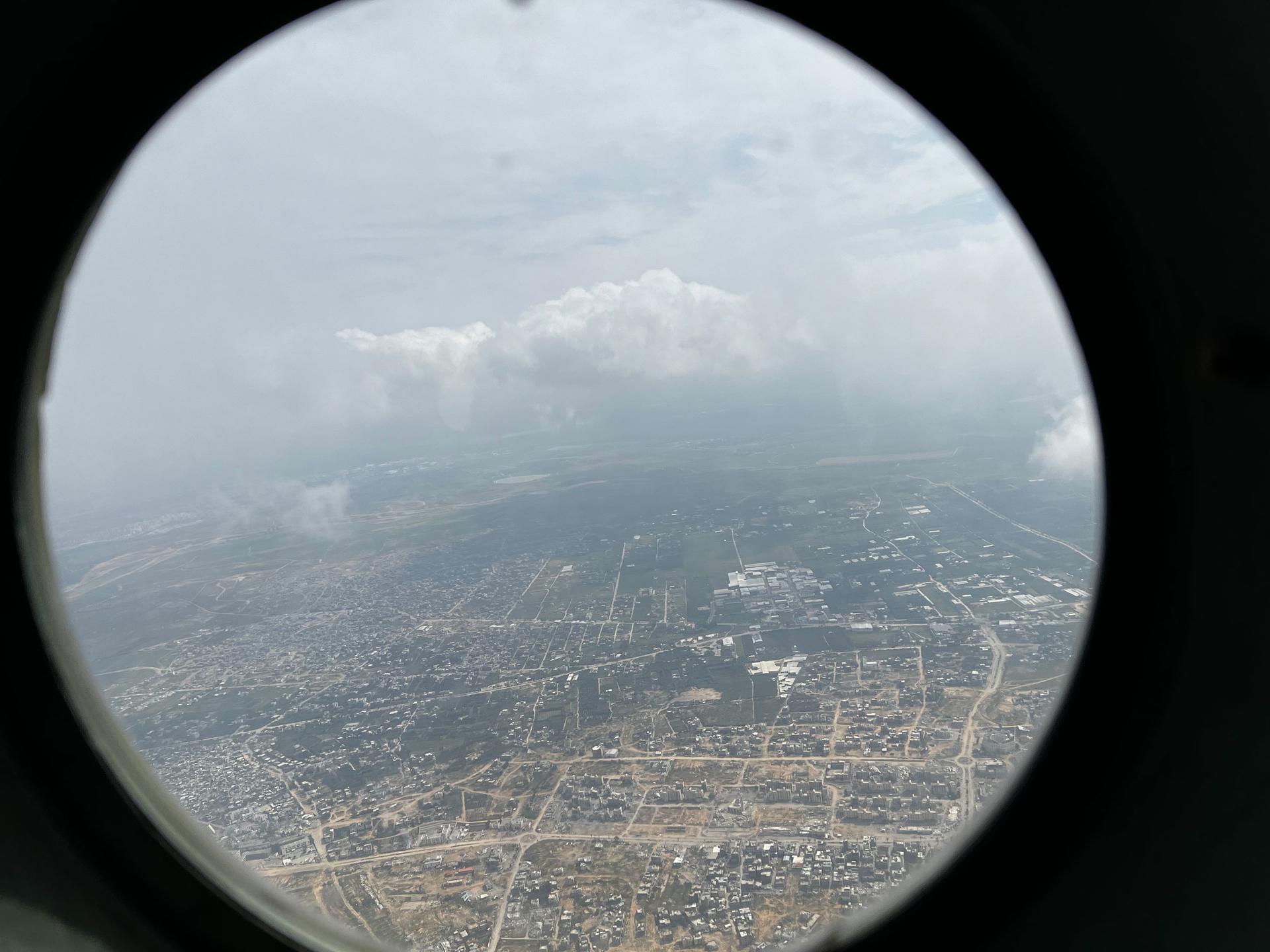At King Abdullah II Air Base near Amman, Jordan, large cargo planes stood ready — rear doors open — like the mouth of a giant whale.
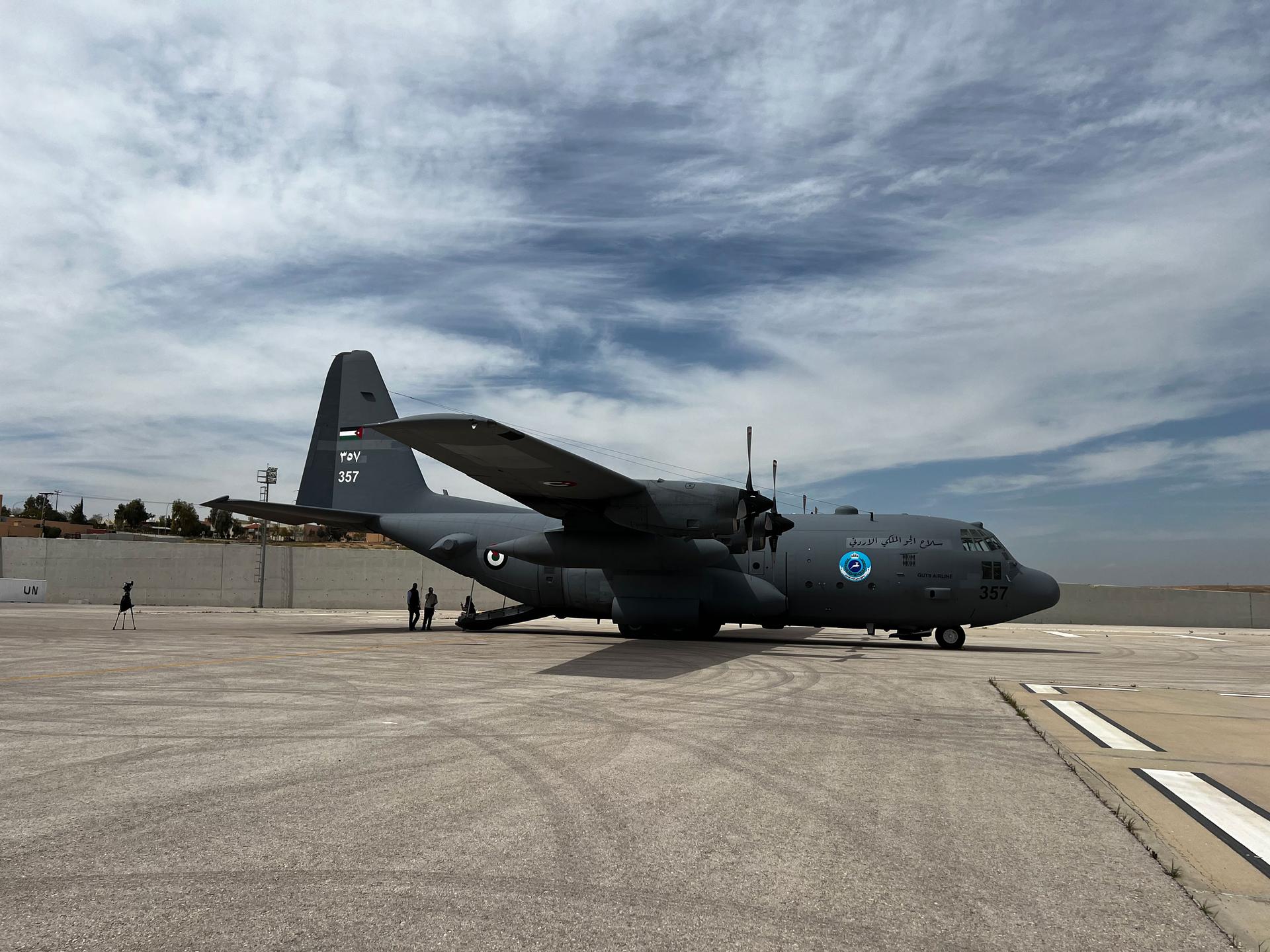
Men in military fatigues loaded pallets of food aid into the plane, which looked minuscule compared to the size of the C-130.
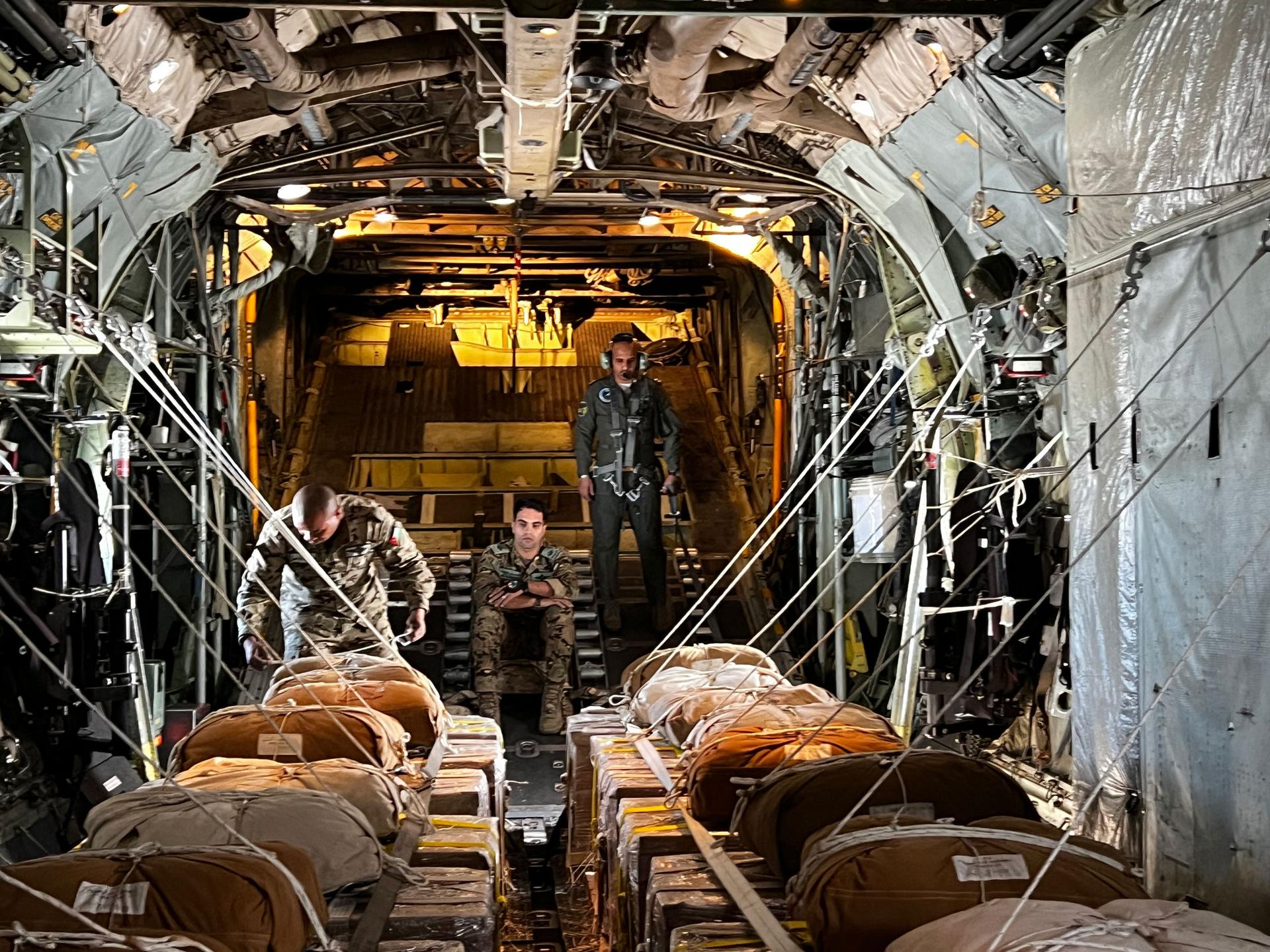
The Jordanian soldiers were preparing for a critical mission — to get aid into the Gaza Strip, which has been under relentless attack by Israeli forces since Oct. 7, when Hamas militants attacked southern Israel.
The United Nations’ World Food Program chief Cindy McCain warned earlier this month that famine is imminent in Gaza and will only be avoided if humanitarian efforts there increase exponentially.
The United Nations’ International Children’s Emergency Fund has said that 1 in 3 children under 2 years of age are acutely malnourished in northern Gaza.
“The speed at which this catastrophic child malnutrition crisis in Gaza has unfolded is shocking, especially when desperately needed assistance has been at the ready just a few miles away,” said Catherine Russell, UNICEF’s executive director.
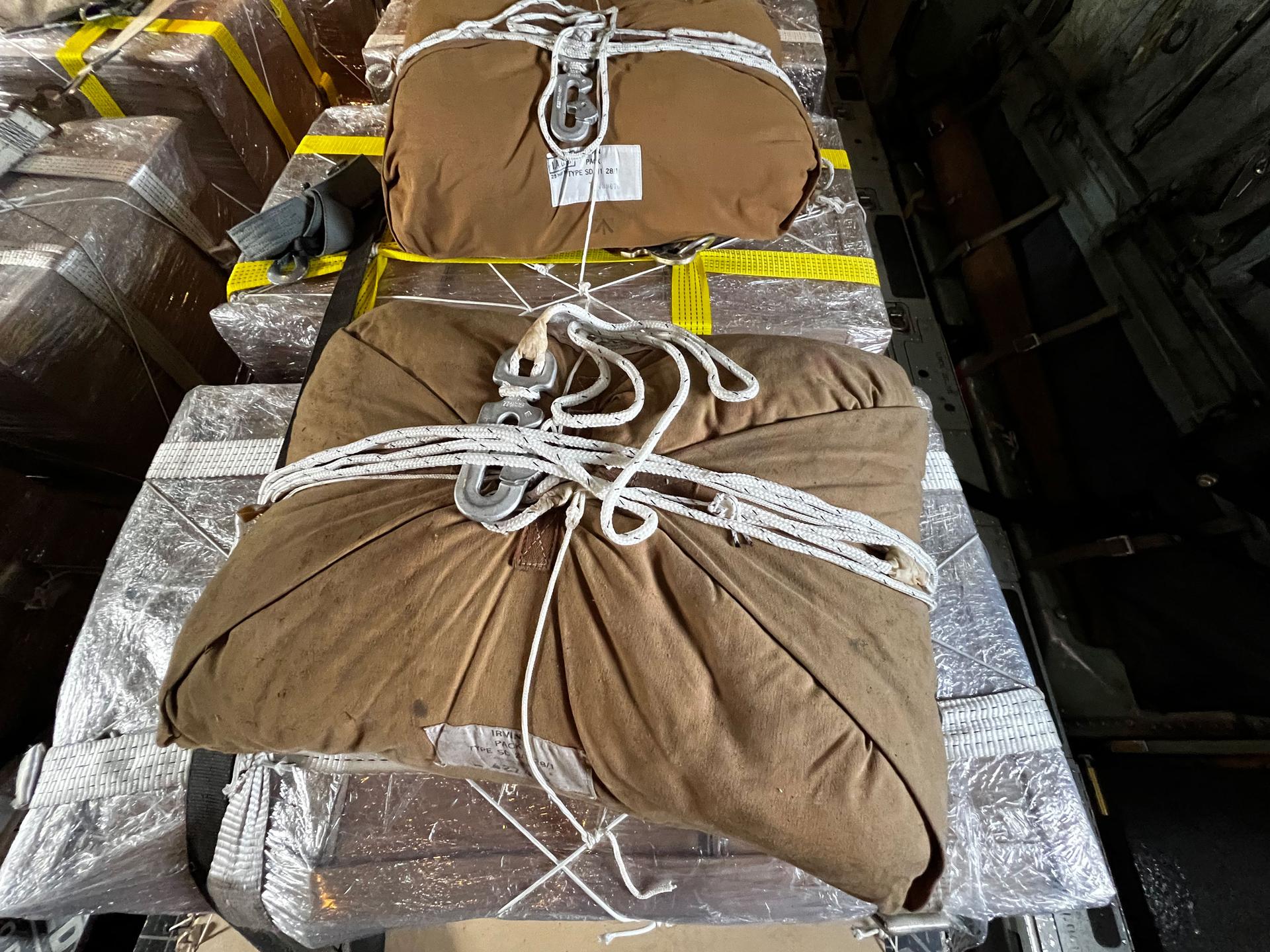
Part of Israel’s war on Gaza has been to cut the enclave off from the outside world. Land borders, which are controlled by Israel and Egypt, have been effectively closed. Trucks that carry aid are inspected and often rejected for supplies that Israel considers “dual use,” meaning that they could pose a security risk to Israel.
In response to the restrictions on ground aid deliveries, the United States and five other countries continue to deliver aid from the air.
One of the countries participating in the airdrop program is Jordan. Planes carrying aid from Egypt, the US and Belgium were on the tarmac in Amman on the day The World visited.
An official, who did not want to be identified because he was not permitted to speak with the press, said that the planes carrying aid fly every day. They carry dried food, he said, as well as baby formula and diapers.
Once everything was loaded, the engines started.
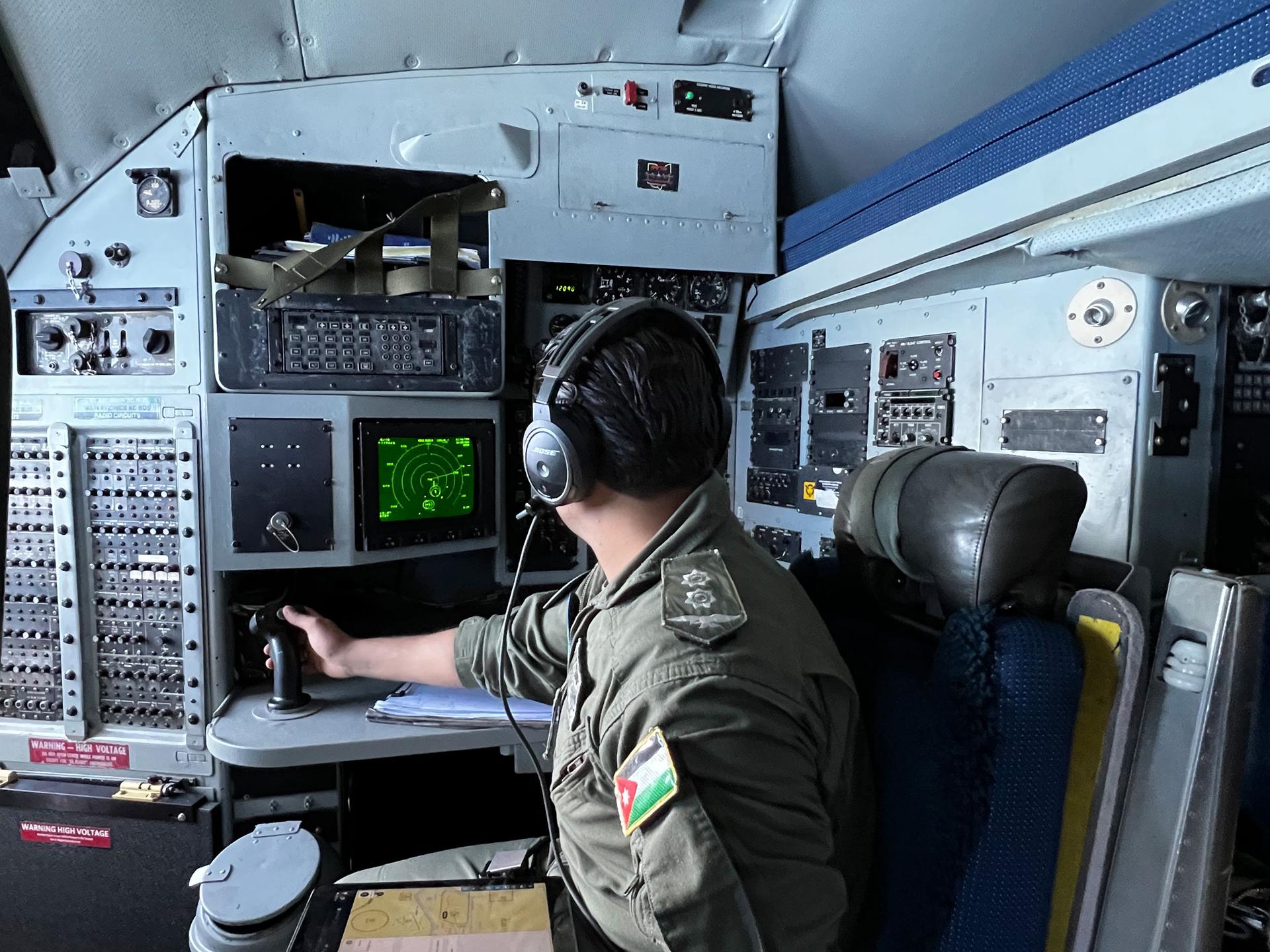
The flight to Gaza is about 45 minutes. Through small, oval windows the blue sky was visible, with a few puffy clouds here and there.
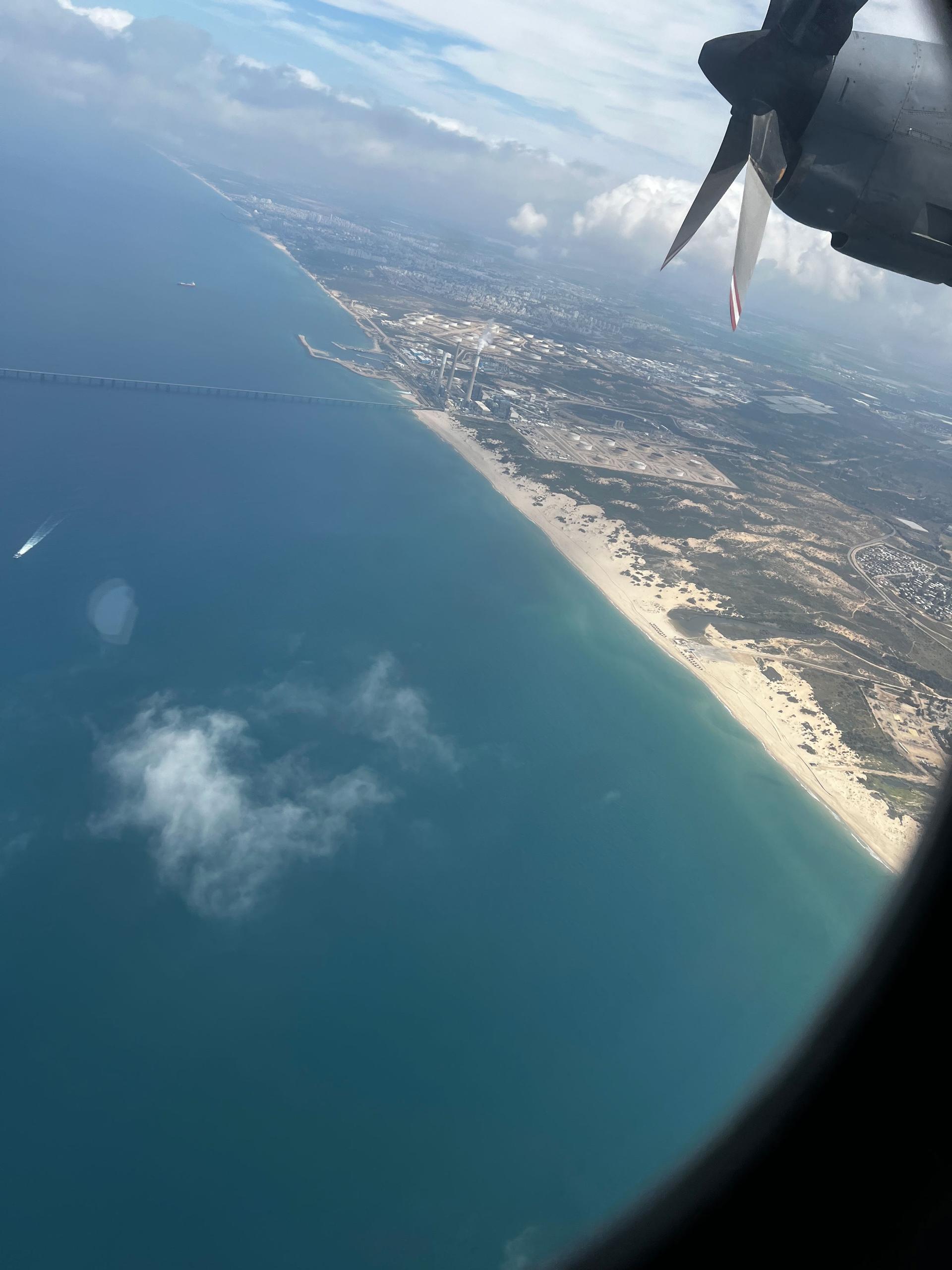
Approaching Gaza, the air force members got busy once again. They cleared the way for the pallets to be dropped. They put on and checked each other’s parachutes for safety.
Descending further, Gaza started to appear.
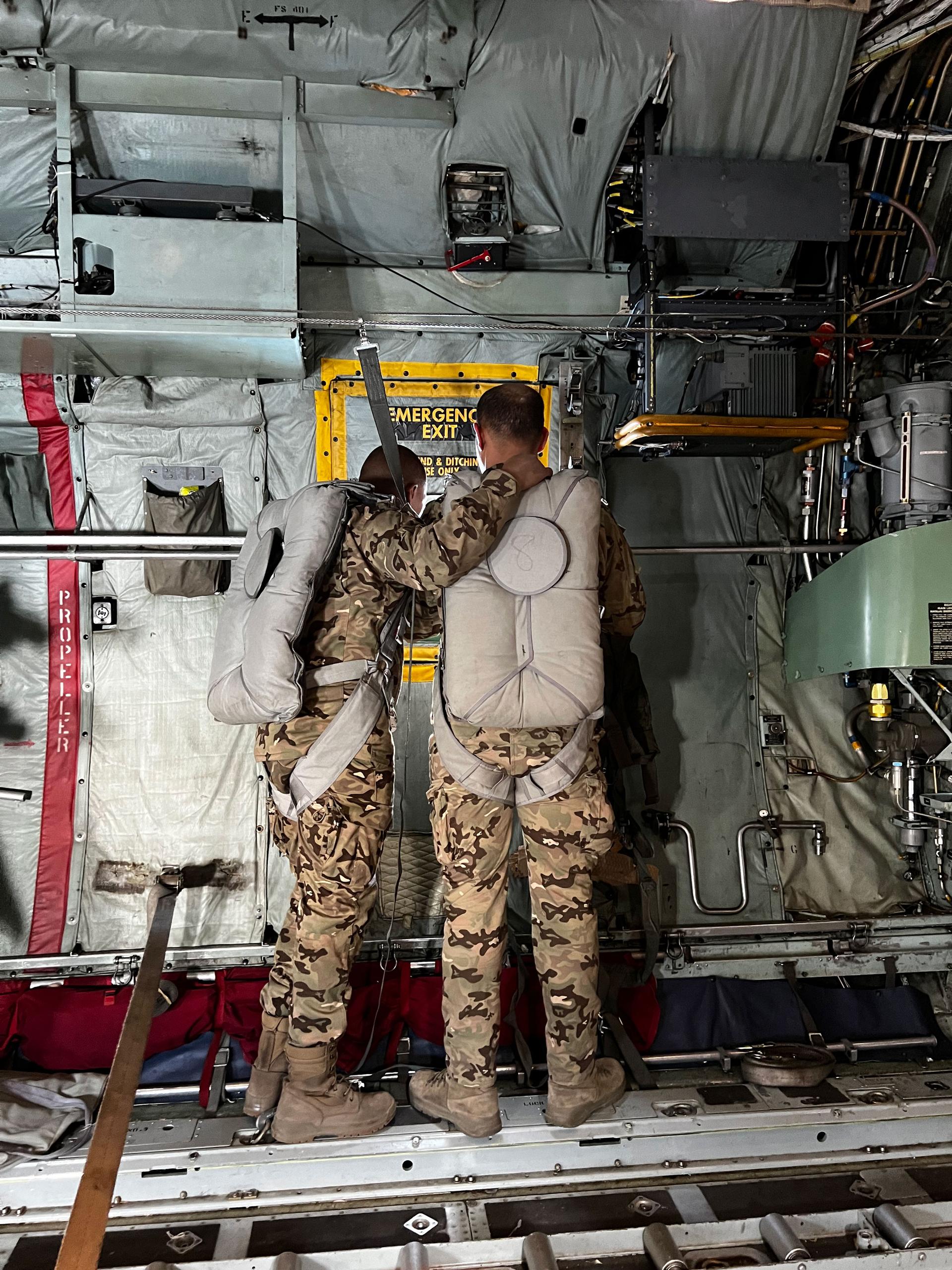
From the plane’s window, the Gaza Strip appeared more or less leveled. Rows of collapsed buildings and mounds of rubble stood in stark contrast to the pristine sandy beach and the turquoise water of the Mediterranean Sea.
The crew gestured to each other using hand signals. The giant door of the plane opened, letting in a burst of sunlight. The aid parcels dropped one by one. Their red parachutes opened and they descended into Gaza. The plane dropped 16 pallets of aid.
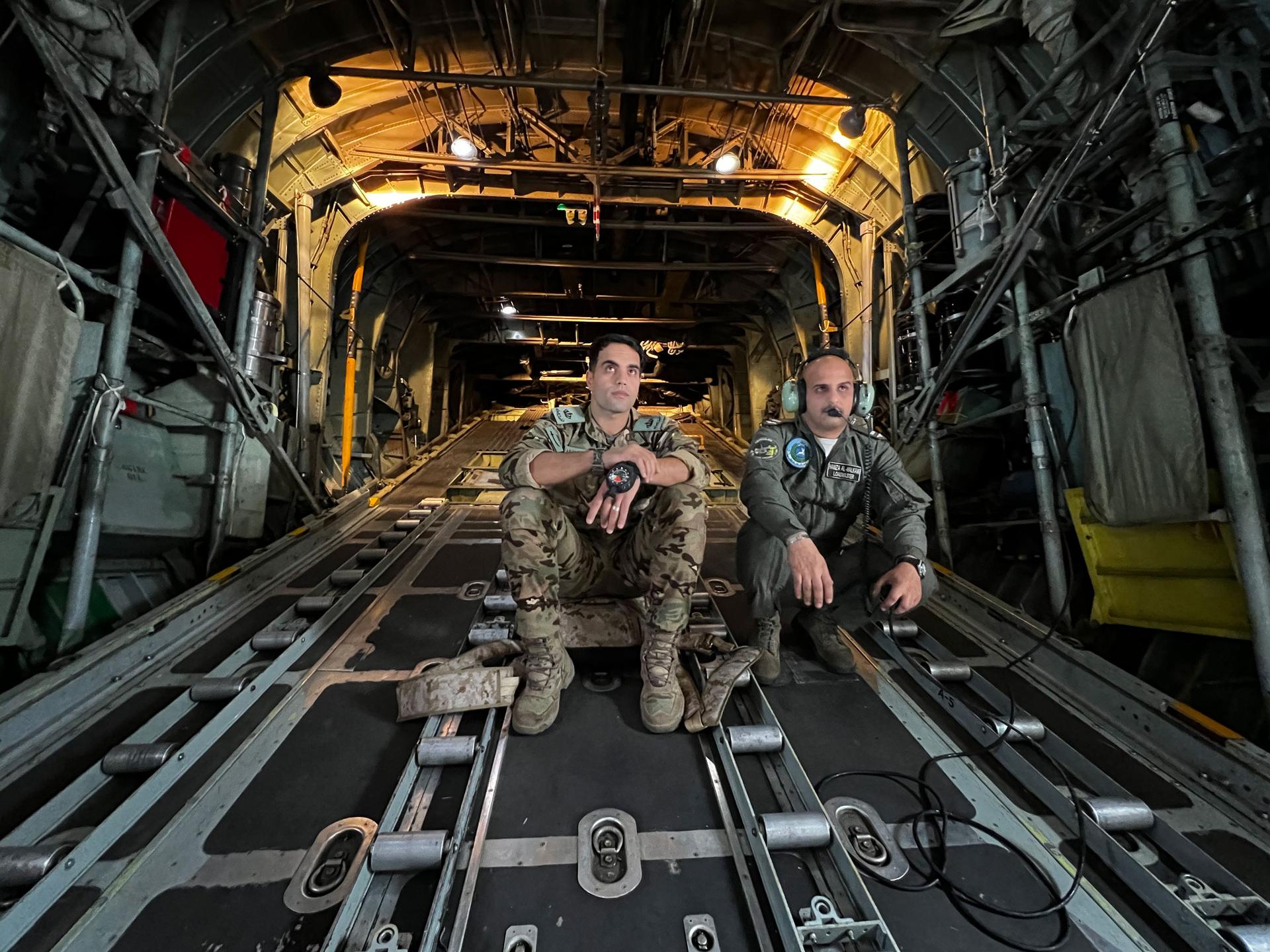
No one on the plane could know if the aid would reach those most in need: malnourished children. The job, however, was done. It was time to make the short journey back to Amman.
Airdrops are the least effective or efficient way to deliver aid.
But in the case of Gaza, they could mean the difference between life and death.
